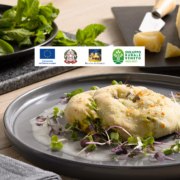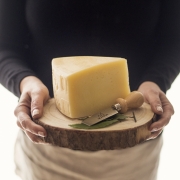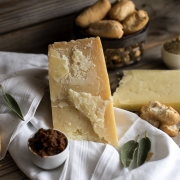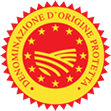GUBANETTA OF FRESH PASTA WITH HERBS AND MONTASIO CHEESE
Easter, as we all know, is a celebration of flavours and traditions. In Friuli Venezia Giulia, in particular, the table is filled with delicacies that tell stories centuries old. Among them stands out the gubana—a rich and enveloping dessert, symbol of festivity and togetherness, lovingly prepared and passed down through generations.
This year, to celebrate Easter with a touch of originality, we’ve reimagined this tradition by creating a savoury version: the gubanetta salata, designed to enhance the authentic flavours of our region. Our gubanetta brings together the aromas of spring, fresh herbs from the meadows, and the intense taste of Montasio cheese.
Ingredients for 4 servings:
150 g semi-aged Montasio cheese
100 g fresh ricotta cheese
20 g aged Montasio
200 g herbs (nettle, mint, chard, dandelion)
200 g flour
2 eggs
salt, pepper, butter, extra-virgin olive oil
Start by preparing the dough: mix the flour with the eggs, a pinch of salt, and a tablespoon of olive oil. Knead until you get a smooth ball, wrap it in cling film, and let it rest for one hour. In the meantime, prepare the filling. Blanch the wild herbs in salted water, cool them quickly in ice water, drain, and chop finely. In a bowl, mix the herbs with ricotta, cubed Montasio (aged 5–10 months), salt, and pepper.
After resting, roll out the dough into thin sheets and arrange strips of filling across the surface. Roll it up to form a long cannellone, then shape it into a spiral. Place the gubanetta on a baking tray, sprinkle with butter flakes and grated aged Montasio (over 10 months), and bake at 180°C (350°F) for about 10 minutes.
While it bakes, prepare a delicious sauce: in a bowl, whisk together a spoonful of boiling water, the remaining grated Montasio, and a knob of butter until creamy. Serve the gubanetta on a bed of this sauce.
A dish that speaks of home, family, and timeless traditions—perfect for making your Easter lunch extra special with the authentic flavour of Montasio cheese.
Happy Easter from Consorzio per la Tutela del Formaggio Montasio!





